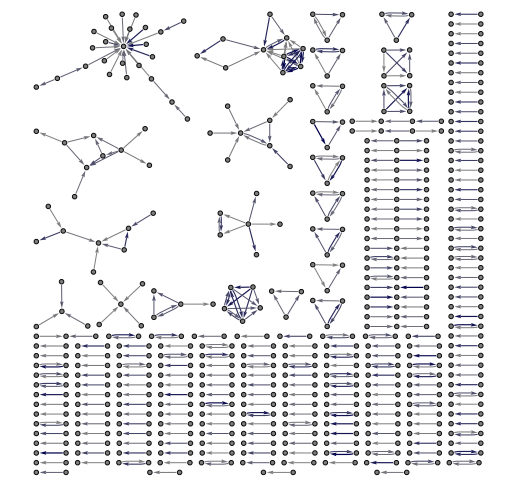Music Festivals, Bluetooth Monitoring and the Behavior of Crowds
The unexpected behaviour of crowds at one of Europe’s largest music festivals should help organisers plan future events, say researchers
The Roskilde Festival is one of the biggest music festivals in Europe. It takes place over eight days during the summer in Denmark and attracts well over 100,000 people every year.
In 2011, Jakob Eg Larsen and pals from the technical University of Denmark set up a curious experiment to observe the patterns of behaviour among festival-goers using Bluetooth technology.
These guys set up 33 Bluetooth scanners at various locations at the festival that recorded any Bluetooth-enabled mobile phone that passed nearby. The idea was to see how participants moved between the six different stages at the event, how this changed with the music that was on offer and how people gathered at other places such as beer halls and restaurants.
This story is only available to subscribers.
Don’t settle for half the story.
Get paywall-free access to technology news for the here and now.
Subscribe now
Already a subscriber?
Sign in
You’ve read all your free stories.
MIT Technology Review provides an
intelligent and independent filter for the
flood of information about technology.
Subscribe now
Already a subscriber?
Sign in
During the eight days, they recorded well over 1 million data points from more than 8500 different devices. That suggests over 6% of the population at the festival were carrying Bluetooth-enabled devices and that each registered more than 140 times at the various locations around the festival site.
The Danish team analysed this data at two different levels. The first was to find individuals who frequently arrived at the same site at the same time (within 10 minutes of each other). They then plotted the connections between these individuals to examine the structure of the groups they formed (see image above).
Many of these groups involved just two or three people who all arrived the same place together. But a few of the groups involved much larger numbers of people with more complex connections between.
For example, Larsen and co observed a star structure with a central node and multiple inbound edges. They concluded that the node in the centre was a person working in a shop in a monitored area who was visited by numerous others on several occasions..
The Danish team also analysed the larger movement of people around the site and how it related to the music on offer. They analysed, for example, the type of music at each stage, whether electronic, rock, folk, hip-hop and so on; the country of origin of the band; and obviously the stage the bands were playing at as well as the date and time.
Larsen and co say the data reveals some interesting patterns. For example, they conclude that many people were unwilling to move around the festival site and instead choose a stage and stayed there, regardless of the genres of music on offer.
But they also discovered say that for those people who did move around the festival site, the country of origin of the band that they went to see was an important factor whereas the genre of music was not. That’s an interesting and unexpected observation.
“Such information can be very valuable for the Festival organizers in the process of booking and allocating bands to stages,” say Larsen and co.
That’s a diverting piece of research that shows how it is possible to monitor the movement and behaviour of crowds on a large scale.
It’s not hard to imagine how these kinds of results could be useful for the organisers of future events or indeed how more ambitious monitoring with audience feedback could lead to interesting social interactions on the very largest scales.
Ref: http://arxiv.org/abs/1306.3133: Crowds, Bluetooth and Rock’n’Roll: Understanding Music Festival Participant Behavior
